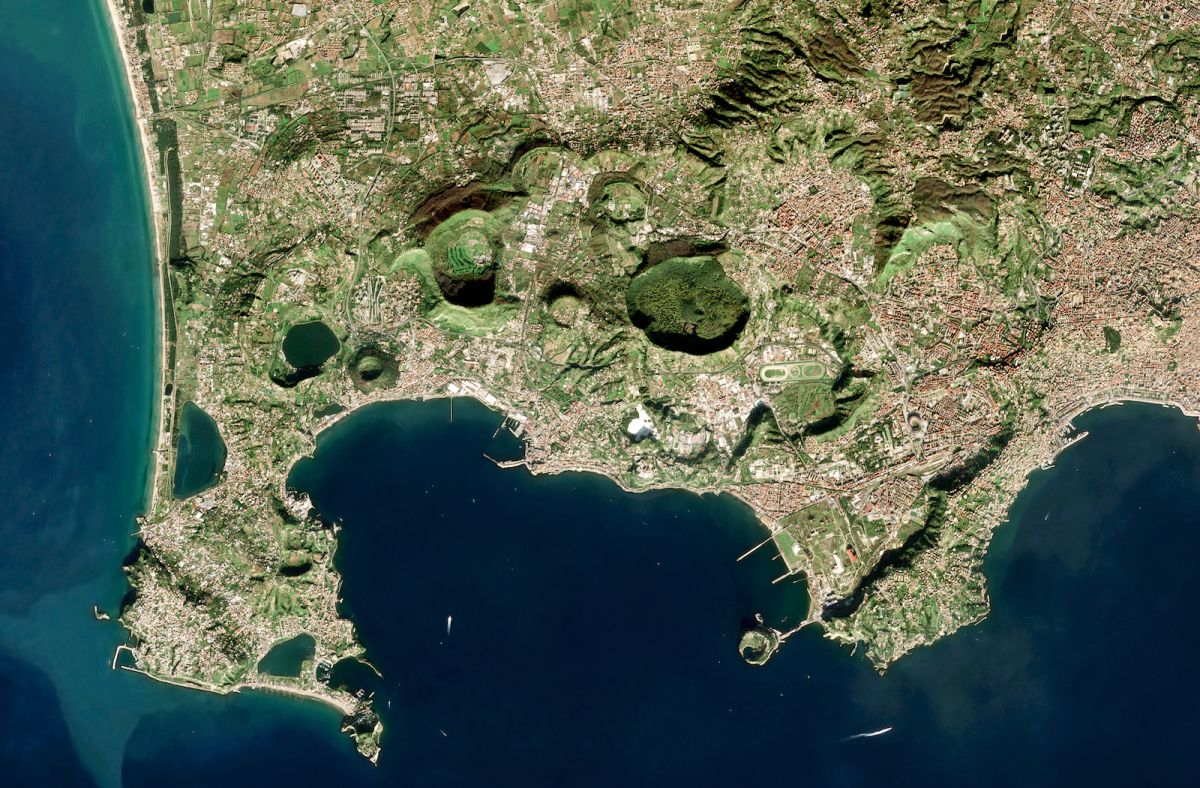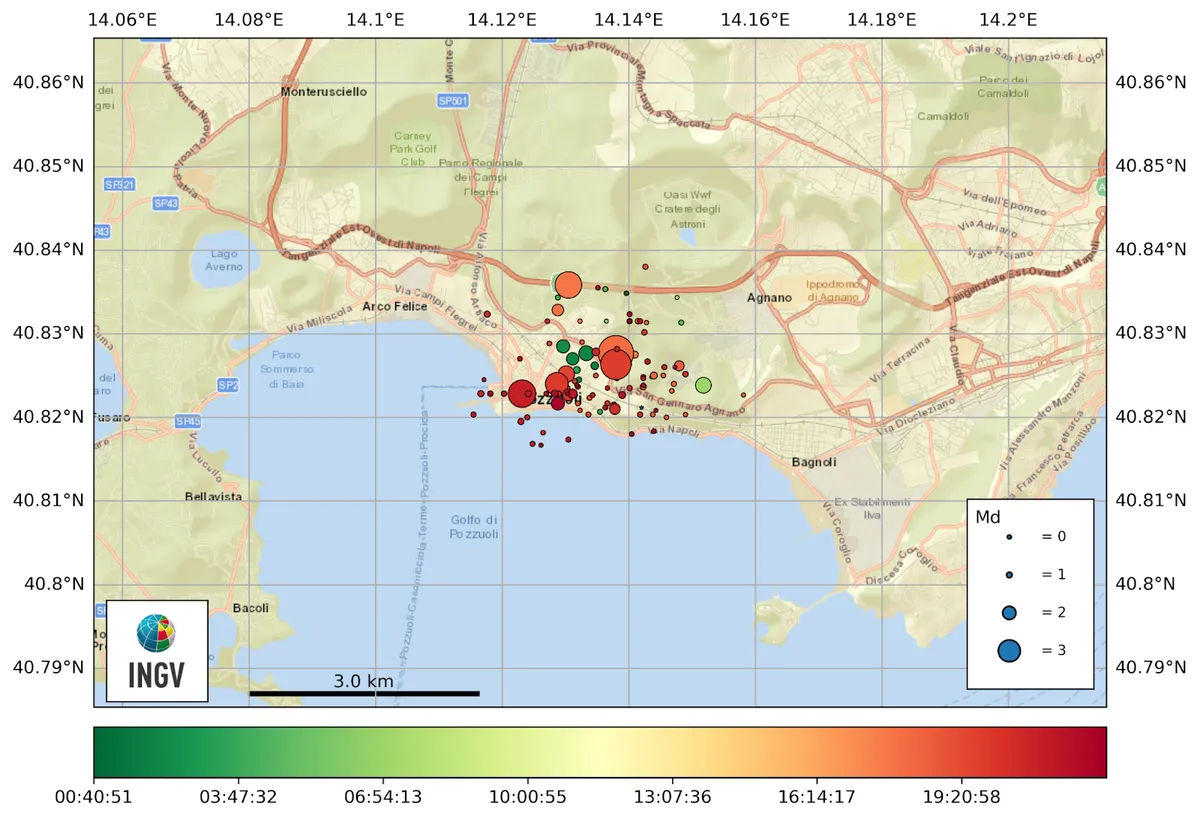World
🧬 One of the world’s most dangerous supervolcanoes, located in Europe, generates 150 earthquakes in just 5 hours

The Phlegraean Fields (in Italian, Campi Flegrei) cover a supervolcano located near Naples, Italy. This supervolcano has been shaken by a wave of 150 earthquakes in recent days, marking the most significant seismic swarm in four decades. This phenomenon is causing concern among scientists and residents of this active volcanic region.
A satellite image from 2016 showing the “breathing” landscape of Campi Flegrei dotted with craters.
Note the urbanization around the craters.
Image credit: Copernicus Sentinel 2017
On May 20, an earthquake with a magnitude of 4.4 occurred at a depth of 1.55 miles (2.5 km). A swarm of quakes lasted nearly five hours, causing panic among residents, though no injuries were reported. About thirty families were temporarily evacuated, and minor tremors were still felt the following midday.
Campi Flegrei forms the largest active caldera in Europe. A caldera is a crater formed when the roof of a volcano collapses into its magma chamber. The supervolcano last erupted in 1538, during which the ground rose by 65 feet (20 meters) before collapsing again.
For 20 years, the ground under Pozzuoli has been gradually lifting, according to Christopher Kilburn, a professor of volcanology at University College London. This uplift is accompanied by irregular earthquakes over the past decade, a phenomenon that is accelerating. A similar seismic swarm occurred in the 1970s and 1980s, raising the ground by 3.5 inches (9 cm) per month and triggering more than 1,300 monthly quakes.

Seismic events recorded between May 20 and May 21, 2024. The largest event (magnitude 4.4) was recorded at 8:10 PM on May 20.
Credit: Istituto Nazionale di Geofisica e Vulcanologia (INGV)
Despite these tremors, the current rate of uplift is 0.8 inches (2 cm) per month. In May, 450 earthquakes were recorded, compared to 1,252 in April 2024, most of them having a magnitude below 1. Surface temperatures and carbon dioxide fluxes showed no significant changes.
The cause of this uplift remains uncertain, with scientists debating the accumulation of gas or magma, or a disturbance in the hydrothermal system. Despite the panic, Naples Mayor Gaetano Manfredi has stated that the situation is under control and there is no imminent risk of eruption.
Campi Flegrei: an unknown supervolcano
Campi Flegrei, located near Naples in Italy, is often referred to as a supervolcano due to its capacity to produce catastrophic-scale eruptions. Unlike typical volcanoes, supervolcanoes can release colossal amounts of magma, ash, and volcanic gases during an eruption.
Such an eruption could have devastating global effects, impacting climate, ecosystems, and human populations. A key feature of a supervolcano is the presence of a caldera, a vast depression formed by the collapse of the volcano’s roof following the emptying of its magma chamber.
Campi Flegrei has already shown its destructive potential during the Campanian Ignimbrite eruption about 39,000 years ago, one of the most violent volcanic eruptions in the Earth’s history. This eruption produced volcanic deposits covering a large part of the Mediterranean and had significant climatic consequences at the time.
Current monitoring of this region is crucial as signs of ground uplift and seismic activity indicate that the volcanic system remains active. Researchers are closely studying these phenomena to anticipate any future potential eruption and minimize risks for the surrounding populations.










